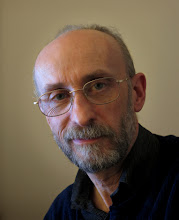Time was, we counted the passage of time in Moons. It's a convenient measure: short enough that one is 'only recently' but long enough that a dozen or so will take you through a set of seasons. 'Moons' in this context, means lunar months—or more specifically, the synodic months from New to Full and back again to New; a period of 29.5 days. (The other lunar month is the sidereal one, when the Moon returns to approximately the same position among the stars.)
The Moon is endlessly fascinating. Whether you are watching a Moonrise over the bay with nothing but your eyes (and possibly a glass of something convivial), or you are studying it at high magnification through a large telescope under a crystal-clear dark rural sky, it has a universal appeal.
For my part, I have watched with telescope and without; with binoculars; with camera; and with all sorts of permutations thereof. I have watched its phases come and go. I have watched the Sun's light slowly creeping across that distant landscape, illuminating crater floors and mountain peaks: a constantly-changing chiaroscuro that Buzz Aldrin described from its surface as 'magnificent desolation'.
In 1976 I was given a second-hand 6-inch (150 mm) reflecting telescope. I had arrived. At last, I had an instrument with a proper mount, driven to follow the movement of the stars (actually, the rotation of the Earth, but let's not quibble), with which I could employ substantial magnification upon celestial sights near and far. By that time I had already decided that I needed to learn about photography, so that I could record what I was seeing through the eyepiece. Little did I know the challenge ahead...
I did try to mate my somewhat ancient SLR camera to the telescope, trying to get decent photographs of Moon and planets, but the results were generally disappointing. Fuzzy, shaken images discouraged me and until I was introduced to the Thomas Cooke 6-inch photovisual refractor at the City Observatory in Edinburgh, I did no more telescopic photography. The Cooke was a fine instrument in a poor situation. Murky city skies and poor 'seeing' were constantly conspiring to reduce image quality, but I did dabble a bit, and even recorded the second Scottish image of Comet Halley with it in 1985.
I have the good fortune these days to work at the Sir Thomas Brisbane Planetarium, which is equipped with a Zeiss 150 mm refractor. The beauty of that instrument is that it sits on a coudé mount, which means that the viewing end doesn't move with the telescope, which in turns allows any camera to be mounted without upsetting the balance. The drawback to this telescope is its optical system: as an ordinary 'achromat', it is subject to incompletely-corrected colour, so that when taking photographs there tends to be a blue haze around bright objects. (The Cooke, with a 'photovisual' triplet objective, was corrected for red, green and blue light.) So, after trying for a while to take some decent lunar photographs through the Zeiss, I find that unless I want to discard the blue channel and go for a greyscale image using just the red and green, it's of limited use. Which is where I come back to the old reflector (the 'CF', it having been manufactured by the old Charles Frank company in Glasgow).
The reflecting telescope was devised by Isaac Newton as an alternative to the simple lens telescopes of the day, which were even more plagued by false colour than any modern achromat (a-chromat ... meaning no colour, but they don't quite live up to that name). I'd never achieved much with mine in the past, but would a modern digital camera make any difference?
One of the great benefits of digital imaging is the immediacy of it: you can see the image without waiting for a film to be processed and printed. So, when you need to assess the accuracy of focus, exposure or subject targeting, you have almost instant feedback. If the camera has live view focusing then the focus can be refined before shooting, under high magnification (although even then, checking the images on a large monitor allows a final decision).
Fortunately, the image scale of the CF is almost perfect for a crop frame DSLR: the Moon sits comfortably in the frame, while allowing some room to move; it's effectively a 1200mm long-focus 'lens'. I have become enamoured of hitching my Canon 40D to it, and recording our nearest natural neighbour, although it's hardly ground-breaking stuff. No two images will be the same though, due to the changing phase and libration—the apparent east-west and north-south wobbling that allows us to see 59% of the lunar surface (even though the Moon keeps nominally the same face to us all the time).
Here then is a set of images taken over the last month or so, as well as a 3D stereo pair using another image from last year. Enjoy.












No comments:
Post a Comment